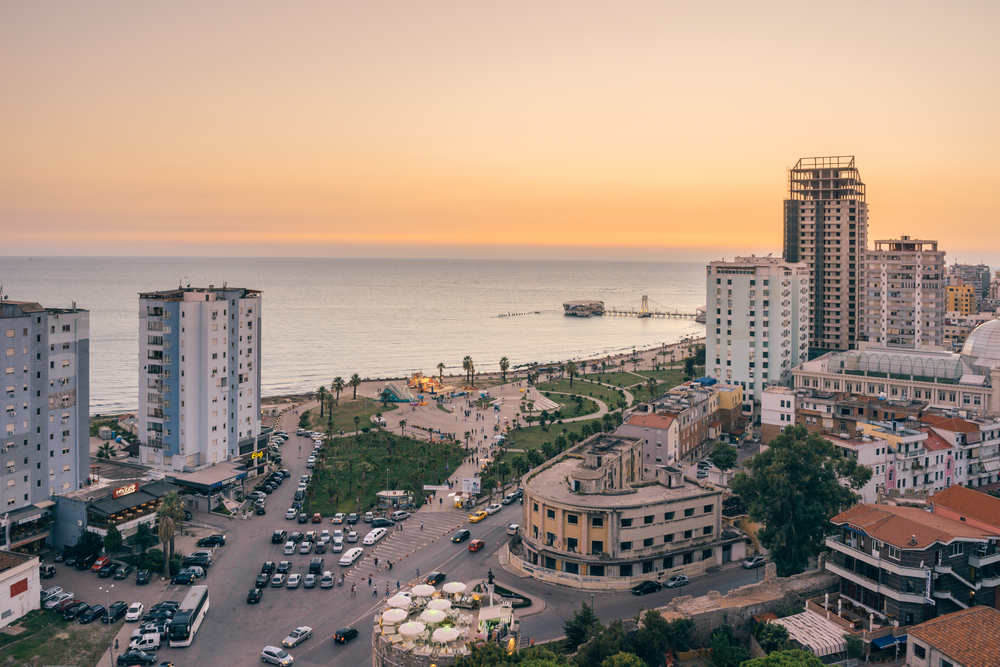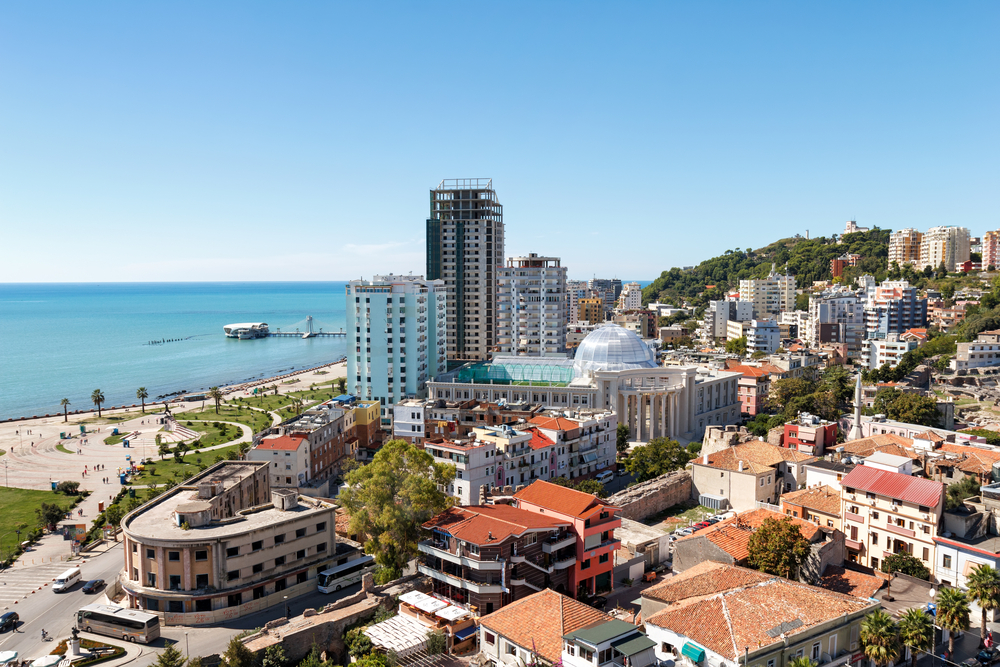
Durres what to see: the main places to visit!
Jun 4, 2023
Durrës what to see: the main places to visit!
Durres has always been a city famous for its cultural life, also known of course as a classic seaside resort, and for its Illyrian, Hellenic, and Roman culture for its works dating back to Byzantine times.
It is very easy to get around in the city of Durres: the two main centers are Taulantia which is the street parallel to the new waterfront and then there is the Town Hall Square, Sheshi Liria point from which all the main streets of the old town start. In this tour we will tell you about the attractions that are located in the older area i.e. the northern part of the city, precisely at the other right of the harbor looking at the sea.
This guide will take you around the city, it has specific stages but you can follow it in the order you want!
INDEX
The Mansion of Zog
The Archaeological Museum
The waterfront
The Venetian Castle and Tower
The Ethnographic Museum
The Fatih Mosque
The Roman Amphitheater
The Great Mosque
The Roman Baths and the Byzantine Forum
The Mansion of Zog is the most visited place in the city of Durres, it was built by the Albanian President-King on the hill above the city with a beautiful view. It was built by Kristi Sotiri in 1926 and was given to the king who loved to use it as his summer residence.
The three sides of the villa overlook the sea, but the most interesting thing is the shape of the building, which precisely resembles an eagle (symbol of Albania). Also important to mention is the significance of the building in political aspect: representative of the monarchy in the city.
After World War II, the mansion was used by the government for government functions as well as for hospitality until it was severely damaged by the riots in the year 1997. But then, it was restored by the royal family, and now it is only used as a military headquarters so it is not accessible to the public.
The Archaeological Museum
In rruga Taulantia is the Archaeological Museum with its largest archaeological collection; it was reopened to the public on March 20, 2015 by Edi Rama after being closed for 4 years.
The museum has a lot of historical artifacts, precisely from prehistoric to classical, Hellenistic and Roman times.
Noteworthy items include stone sarcophagi and Roman funerary stelae, as well as a significant number of miniature busts depicting the goddess Venus, which clearly show how the city was once an important center of worship dedicated to the goddess. But the outdoor area also proved to be very pleasant and interesting, as it allows visitors to stroll through gardens and porticoes where marvelous marble statues of considerable size are preserved.
The Durres Archaeological Museum is open from Tuesday to Sunday, from 9 a.m. to 4 p.m., and the entrance fee is 300 lek.
The waterfront
View of the waterfront in Durres
Durres' wide waterfront is definitely one of the city's main destinations, where you should not fail to indulge in a long and relaxing walk.
Especially after sunset, the 17,744 sq. m. coastline, which is bisected by the harbor, comes alive with stalls, merry-go-rounds, and lots of people, talking and relaxing during the evening xhiro. Hotels, bars, restaurants, clubs and trendy venues are really not lacking in this part of town-you will be spoiled for choice!
The buildings overlooking the avenue overlook the figure of the monument that closes the promenade: in typical socialist style, the statue commemorates the futile attempt to resist fascist Italy's invasion on April 7, 1939.
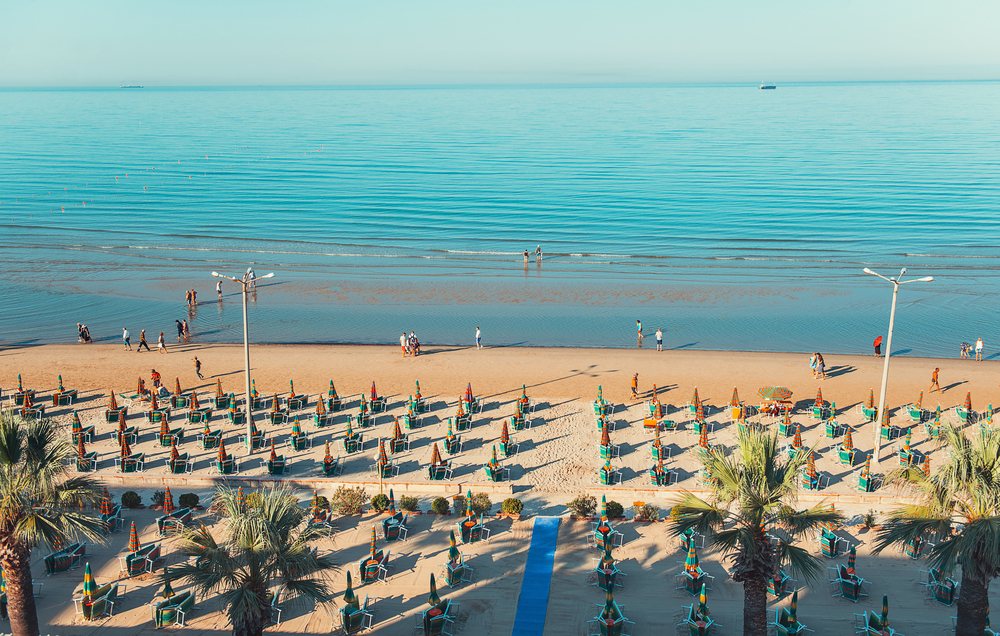
The Venetian Castle and Tower
the venetian tower
Leaving the waterfront, the city tour can only continue with a short walking tour through the avenues of the old town, once defended by the immense walls of Durazzo Castle (Kalaja e Durrësit in Albanian), of which all that remains today is a Venetian fortification tower, a few meters of walls, and three gates to the old town (two facing the sea, and one on the southwest side).
The stronghold was built around the 5th century AD at the behest of Byzantine Emperor Anastasius I, a native of Dyrrachium (modern-day Durrës), with the aim of defending the citadel from barbarian invasions, which continually threatened the empire in those years. Durrës thus became the most fortified center on the Adriatic coast, with walls as high as 12m in some sections, and watchtowers placed every 60m or so of the perimeter; the defenses were further strengthened first by the Venetians and then by the Ottomans.
Evidence of the period when the city was under the control of the Serenissima is the Rotunda, the 15th-century Venetian Tower, which has a diameter of 16 m and a height of just over 9 m, only one floor and a staircase leading up to the crenellated roof.
You will find it at the beginning of rruga Anastas Durrsaku, next to the small square that houses the monument to Mujo Ulqinaku, an Albanian patriot and naval officer who was killed by fascists in 1939 during Durrës' resistance to the Italian invasion of Albania. The bar on the tower terrace fortunately has not distorted the original layout of the tower; lovely sea views and quite good cocktails.
The Ethnographic Museum
One of the rooms of the Ethnographic Museum of Durres.
Halfway between the Venetian tower and the Roman amphitheater, on a side street of rruga Xhamia, is the Ethnographic Museum of Durrës, or also called Muzeu Aleksandër Moisiu. The museum is in fact the House Museum of Aleksandër Moisiu, an Austrian native speaker and Albanian-born actor who was among the best known in the German-speaking area in the early 20th century.
The first two halls celebrate Moisiu's acting career with movie posters, photos, and other intriguing props and documents, while upstairs the actual ethnographic museum has been prepared: the collection includes traditional costumes, and products of the most distinctive and symbolic crafts of central Albania.
Finally, the house itself also deserves a small mention, a typical 19th-century Durrës house that has kept intact all the original architectural features. The entrance fee is only 100 lek.
The Fatih Mosque
Near the ethnographic museum, in rruga Xhamia, almost invisible except for its minaret that stands out from the other buildings, is a real gem of art and architecture: the Fatih Mosque (Xhamia and Fatihut in Albanian).
Built in 1502 on the ruins of a historic medieval basilica, the Little Mosque of Durrës (or Old Mosque of Durrës) is the first building constructed soon after the Ottomans invaded Albania; the name was inspired by the Ottoman Turkish sultan Mehmet II the Conqueror (Mehmet Fatihu). In 1973 it was closed to worshippers and placed on the list of so-called cultural monuments.
The mosque therefore did not suffer any damage from Enver Hoxha's pro-atheism policy, arriving to the present day in a perfect state of preservation.The beautiful building is characterized by an unelaborate and minimalist structure-it has no particular architectural trappings, the floor plan is rectangular in shape, and the roof is four-sloped. Only the minaret is not original: in fact, it seems to have been rebuilt after the fall of the kingdom.
Roman Amphitheater
Dating back to Roman times is the most relevant archaeological evidence to be visited in the city: the Amphitheater of Durrës. It is the largest structure of its kind in all the Balkan countries, and was built in the second century AD, during the reign of Emperor Trajan, to accommodate about 20,000 spectators.
The cavea has an elliptical shape 20 m high and nearly 136 m in diameter, with stairways originally covered with white tiles; the western part of the hemicycle is on a hilly area, while the opposite part sits on flat ground.
Once inside you can admire the intricate system of steps and tunnels that were part of it, as well as linger over the stunning early Christian chapel with frescoes, built in the second half of the 4th century, and then adorned with stunning mosaics in the 11th century AD.
Discovered in 1966, the Roman amphitheater was neglected for years by the local government, so much so that it ended up in a near-deteriorated condition in previous years, but restoration efforts begun in 2004 by the University of Parma have entirely restored it to a new condition and made it a tourist attraction. It also appears that so far only half of the entire structure has been brought to light!
The Durrës Amphitheater is practically in the city center and can be reached in a few minutes by walking up rruga Anastas Durrsaku from the waterfront; entrance fee 300 lek.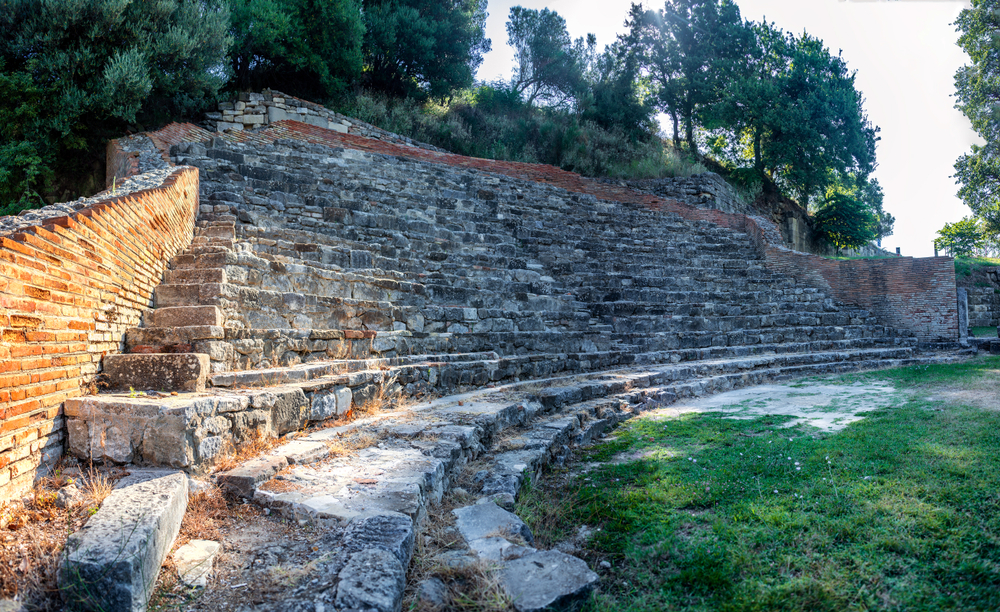
The Great Mosque
Leaving on the opposite side from the one you entered, you can end the walk by walking along the last stretch of Epidamn Boulevard to arrive at the city's main square, Liria Square, on which the city hall, mosque and theater are located.
The Great Mosque of Durrës (Xhamia e Madhe in Albanian)-also called the New Mosque (Xhamia e Re) so as not to confuse it with the Fatih Mosque-is a huge building of recent construction, which stands out in the urban world for its structure in shades of yellow and orange, and for its giant dome, visible from many parts of the city.
Built in the 1930s on the site of an old Ottoman mosque, it was short-lived in its first version: closed in '67 by the regime's atheist fury, it was turned into a place for youth, while the minaret was destroyed. The structure thus owes its current appearance to later interventions, carried out in the 1990s.
As is the case with many other mosques, you will have to limit yourself to admiring it from the outside and enjoying its architecture and special features, as the interiors are often bare (except in historic mosques) and generally reserved for worshippers only.
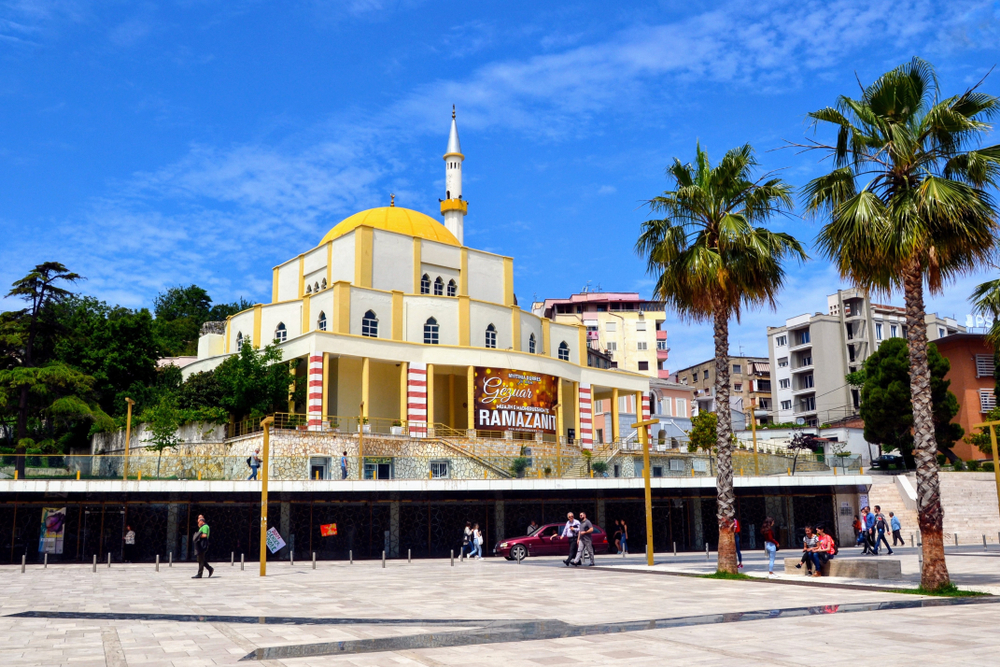
The Roman Baths and the Byzantine Forum
The Roman baths of Durres
To the left of the Grand Mosque of Durrës, in front of the city hall, you may notice a beautiful building of socialist type: the Aleksandër Moisiu Theater, one of the most famous and beloved theaters in all of Albania for its beautiful shows. It was inaugurated on January 11, 1953, with the play "The Village Girl," a comedy by artist Fatmir Gjata.
During the construction work of the theater, the remains of ancient Roman baths were found, so the rear part of the building was specially built on pillars that could best preserve the archaeological site; restored in 2015, the Roman Baths of Durrës were officially opened to the public, and are now open to visitors.
The baths date from around the first century AD and clearly show the presence of a calidarium (the area designated for hot water and steam baths), an apodyterium (changing room), a tepidarium and a frigidarium: full-fledged baths, complete with a pool totally covered with black and white tiles forming a fantastic checkerboard decoration. It seems that the Roman Baths of Durrës were served by an aqueduct from the Hadrianic period, which took water directly from the Erzen River, about 20 km away from the facility.

 Albanian
Albanian Italian
Italian Spanish
Spanish


